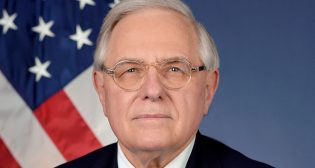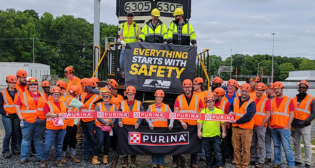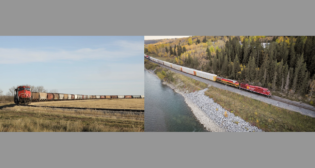
Punitive enforcement measures do NOT improve safety
Written by Tom SimpsonLate last year, the Federal Railroad Administration announced that safety fines in 2016 were the highest in agency’s 50-year history, surpassing the previous record-breaking year in 2015 and suggesting the ever-increasing safety successes enjoyed by our industry could be tied to such punitive measures.
The press release got me thinking about what actually drives rail safety. I believe improved safety is a result of collaborative efforts undertaken by railroads, suppliers and yes, the federal government, but not because of their punitive enforcement efforts.
Fines do not stimulate the development of new and safety-enhancing products and services; to the contrary, in my view, over-reliance on fines actually lowers capital expenditures, slows development of new technology and ironically impedes safety improvement. Here’s why.
Our industry fully comprehends the importance of satisfying key customer requirements and that improving safety tops the list of those requirements. It is a competitive marketplace, so rail suppliers invest in research and development to engineer new products and increase sales, keeping improved safety, among other railroad demands, at the top of the list.
However, the road from new ideas to successful new products can be long, winding and expensive. Especially in the rail industry, new products compete with existing technology and must be proven effective and compliant in both laboratory and field tests, before being widely accepted. Arduous or not, it’s a process that ensures new products meet the customer requirements for safety, interchange, reliability, performance and price – which, in turn, requires large investments of employee time, company infrastructure and capital from both railroads and railway suppliers.
FRA data shows that overall accident rate has dropped sharply over the last ten years with three areas showing the greatest improvement: Reduction of human error, improved track, and better equipment… All of which were made possible by investments across our sector.
First, railroads are constantly striving to improve safety through capex investments ($22 billion in 2017 alone). Operational improvements include use of distributed power and the improved braking that provides, as well as new products that are safer for employees to install and operate, not to mention current and future investment in positive train control. In addition, railroads are finding more time for maintenance of way crews to access track that is in high demand, and in turn, maintenance of way suppliers are multiplying the safety benefits of track time by developing new more efficiency machines and techniques.
Second, rail safety is also being improved across the network thanks to new technologies being developed by railway suppliers. Broadly speaking, examples are stronger tank cars, improvements to pneumatic air brake systems, increased accuracy of wayside inspection devices and predictive diagnostics that improve the operational excellence and safety of railroads. More specifically, if you were at the RSI/CMA event in Omaha last October, you heard UP’s Lance Fritz outline specific steps UP is taking to improve safety and reduce casualties. Lance cited the use of drones, improved welding techniques and machine vision car imaging systems that automate inspection of trains. Also heard in Omaha was UP’s demand for more adherence to their quality requirements—one of the toughest in the industry.
And, finally, the federal government itself has played a role in improving rail safety as well. Take for example the Section 130 Highway Rail Grade Crossing safety program that has poured hundreds of millions of dollars in grade crossing safety projects and the USDOT’s continued support for the Operation Lifesaver educational effort. The largest number of casualties that accrue to the railroad safety account occur at highway rail grade crossings and along the right of way. Joint public private partnerships (think CREATE) have also led to increased safety as well, by replacing ancient interlockings, modernizing the physical plant and separating freight and passenger rights-of-way.
In my 30 years in the railroad industry, including my term as Chairman of the E.H. Harriman Safety Awards Committee, not once have I heard anyone extol the safety virtues of the FRA enforcement fining process. All of us, railroads, suppliers and the federal government should continue to share a mission—to create a safe, reliable and efficient system to move people and goods by rail throughout North America while ensuring adequate capital exists for suppliers and the industry as a whole to make investments in new technology that lead to improved safety.
It seems to me that is a far better use of industry capital than paying fines to the FRA.



